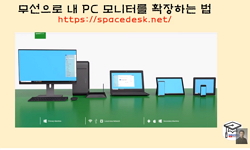Until now, studies on the stone chamber tombs of the Sabi Period have focused on Royal Tombs, represented by the Neungsan-ri Tombs of Buyeo and the Twin Tombs of Iksan, and stone chamber tombs found throughout Sabi Capital City and its environs. These...
http://chineseinput.net/에서 pinyin(병음)방식으로 중국어를 변환할 수 있습니다.
변환된 중국어를 복사하여 사용하시면 됩니다.
- 中文 을 입력하시려면 zhongwen을 입력하시고 space를누르시면됩니다.
- 北京 을 입력하시려면 beijing을 입력하시고 space를 누르시면 됩니다.
https://www.riss.kr/link?id=A106918478
-
저자
장재원 (국립부여문화재연구소)
- 발행기관
- 학술지명
- 권호사항
-
발행연도
2020
-
작성언어
Korean
-
주제어
사비도성 ; 사비기 석실묘 ; 묘역 ; 조성 ; 확장 ; 씨족 ; Sabi Capital City ; Stone chamber tombs of the Sabi Period ; Cemeteries ; Formation ; Expansion ; Clan
-
등재정보
KCI우수등재
-
자료형태
학술저널
-
수록면
159-195(37쪽)
-
KCI 피인용횟수
1
- 제공처
- 소장기관
-
0
상세조회 -
0
다운로드
부가정보
다국어 초록 (Multilingual Abstract)
These studies have tried to identify changes in stone chamber tomb architecture, the identity of the deceased buried in the tomb, the government official ranking system (including rank grade), and the nature of the local ruling system. This study tries to restore the social aspects that can be identified in terms of the process of cemetery formation and expansion by examining the cemeteries of the Sabi Period found throughout Sabi Capital City.
For this purpose, a radius of about 5km was drawn around the site of Gwanbuk-ri site, where major buildings of the capital city were located, and this was established as the range of Sabi Capital City. The way in which numerous stone chamber tombs were constructed within cemeteries, as well as how densely the cemeteries were located, was examined.
Next, This study undertook a formal classification of the stone chamber tombs by extracting attributes reflecting temporal elements, among the various attributes of stone chamber tombs of the Sabi Period. The stone chamber tombs of the Sabi Period were resultingly classified into 10 types.
This study regards that the formal changes of stone chamber tombs of the Sabi Period resulted from new construction techniques, such as the use of door frames and hexagonal type ceilings. Moreover, changes in perceptions of burial were seen to have resulted in the transition from double burials to single burials which was accompanied by the scaling down of the stone chamber. Based on this perspective, three phases were established based on changes in the stone chamber tombs of the Sabi Period. The first phase, which is characterized by the use of opening type door structures and tunnel ceilings, came to an end with the appearance of complete door frames and hexagonal type ceilings. The second phase is characterized by the use of complete door frames and hexagonal type ceilings.
The third phase experienced changes in ideas about burial, which led to a scaling down in the real width of the stone chamber. With this, structure simplification occurred in the third phase.
Lastly, on the basis of changes in the stone chamber tombs of the Sabi Period and the characteristics of each phase, this study was able to identify that the cemeteries distributed throughout Sabi Capital City were formed at different times, and that they had expanded or had been newly formed with the flow of time. First, this study inferred that cemeteries could have been formed at an early time in cases when their locations were geographically adjacent to the Capital City or were advantageous when travelling by road. Cemeteries located in areas associated with the local power base or which were deemed important prior to the establishment of Sabi Capital City could also be attributed to early dates. Next, this study identified that the expansion of earlier cemeteries and newly formed cemeteries was directly related to the rise of stone chamber tombs. This study proposes that the reformation of the government official ranking system which took place during the reformation of national ruling system during the reign of King Wideok (威德王) provided the background for the rise of stone chamber tombs, since the reformation expanded the ranks that could build stone chamber tombs. Also, aspects of expansion between ridges within the same cemetery and newly formed cemeteries accompanying the rise of stone chamber tombs were inferred to be related to the phenomenon of new clans advancing into the center, as a consequence of the branching of clans based on blood relations and reformation of the government official ranking system.
Until now, studies on the stone chamber tombs of the Sabi Period have focused on Royal Tombs, represented by the Neungsan-ri Tombs of Buyeo and the Twin Tombs of Iksan, and stone chamber tombs found throughout Sabi Capital City and its environs.
These studies have tried to identify changes in stone chamber tomb architecture, the identity of the deceased buried in the tomb, the government official ranking system (including rank grade), and the nature of the local ruling system. This study tries to restore the social aspects that can be identified in terms of the process of cemetery formation and expansion by examining the cemeteries of the Sabi Period found throughout Sabi Capital City.
For this purpose, a radius of about 5km was drawn around the site of Gwanbuk-ri site, where major buildings of the capital city were located, and this was established as the range of Sabi Capital City. The way in which numerous stone chamber tombs were constructed within cemeteries, as well as how densely the cemeteries were located, was examined.
Next, This study undertook a formal classification of the stone chamber tombs by extracting attributes reflecting temporal elements, among the various attributes of stone chamber tombs of the Sabi Period. The stone chamber tombs of the Sabi Period were resultingly classified into 10 types.
This study regards that the formal changes of stone chamber tombs of the Sabi Period resulted from new construction techniques, such as the use of door frames and hexagonal type ceilings. Moreover, changes in perceptions of burial were seen to have resulted in the transition from double burials to single burials which was accompanied by the scaling down of the stone chamber. Based on this perspective, three phases were established based on changes in the stone chamber tombs of the Sabi Period. The first phase, which is characterized by the use of opening type door structures and tunnel ceilings, came to an end with the appearance of complete door frames and hexagonal type ceilings. The second phase is characterized by the use of complete door frames and hexagonal type ceilings.
The third phase experienced changes in ideas about burial, which led to a scaling down in the real width of the stone chamber. With this, structure simplification occurred in the third phase.
Lastly, on the basis of changes in the stone chamber tombs of the Sabi Period and the characteristics of each phase, this study was able to identify that the cemeteries distributed throughout Sabi Capital City were formed at different times, and that they had expanded or had been newly formed with the flow of time. First, this study inferred that cemeteries could have been formed at an early time in cases when their locations were geographically adjacent to the Capital City or were advantageous when travelling by road. Cemeteries located in areas associated with the local power base or which were deemed important prior to the establishment of Sabi Capital City could also be attributed to early dates. Next, this study identified that the expansion of earlier cemeteries and newly formed cemeteries was directly related to the rise of stone chamber tombs. This study proposes that the reformation of the government official ranking system which took place during the reformation of national ruling system during the reign of King Wideok (威德王) provided the background for the rise of stone chamber tombs, since the reformation expanded the ranks that could build stone chamber tombs. Also, aspects of expansion between ridges within the same cemetery and newly formed cemeteries accompanying the rise of stone chamber tombs were inferred to be related to the phenomenon of new clans advancing into the center, as a consequence of the branching of clans based on blood relations and reformation of the government official ranking system.
참고문헌 (Reference)
1 이문형, "정읍지역 백제 횡혈식석실묘의 분포와 현황 - 영원면 일대를 중심으로 -" 인문학연구소 17 (17): 171-203, 2016
2 이주헌, "익산 쌍릉의 유구와 유물에 대하여" 국립전주박물관 2016
3 이성준, "익산 쌍릉과 출토 인골의 성격에 대한 연구" 한국고고학회 (109) : 292-325, 2018
4 오동선, "영산강유역권 사비기 석실의 변천과 의미" 한국고고학회 (112) : 202-245, 2019
5 허진아, "성토대지 조성을 통해 본 사비도성의 공간구조 변화와 운용" 호서고고학회 (22) : 48-74, 2010
6 김종만, "사비시대 백제토기 연구" 서경문화사 2004
7 金庚澤, "부여지역 백제문화유적의 세계문화유산적 가치" 공주대학교 백제문화연구소·한국전통문화학교 한국전통문화연구소 2007
8 백제고도문화재단, "부여 능안골고분군 3차 발굴조사 약보고서" 2017
9 서현주, "부여 능산리고분군과 백제 사비기 고분의 위계" 국립부여박물관·국립부여문화재연구소 2019
10 부여군, "부여 능산리고분군 조사 기록화사업 III —부여 백제고분 축조기법 연구—" 부여군 2017
1 이문형, "정읍지역 백제 횡혈식석실묘의 분포와 현황 - 영원면 일대를 중심으로 -" 인문학연구소 17 (17): 171-203, 2016
2 이주헌, "익산 쌍릉의 유구와 유물에 대하여" 국립전주박물관 2016
3 이성준, "익산 쌍릉과 출토 인골의 성격에 대한 연구" 한국고고학회 (109) : 292-325, 2018
4 오동선, "영산강유역권 사비기 석실의 변천과 의미" 한국고고학회 (112) : 202-245, 2019
5 허진아, "성토대지 조성을 통해 본 사비도성의 공간구조 변화와 운용" 호서고고학회 (22) : 48-74, 2010
6 김종만, "사비시대 백제토기 연구" 서경문화사 2004
7 金庚澤, "부여지역 백제문화유적의 세계문화유산적 가치" 공주대학교 백제문화연구소·한국전통문화학교 한국전통문화연구소 2007
8 백제고도문화재단, "부여 능안골고분군 3차 발굴조사 약보고서" 2017
9 서현주, "부여 능산리고분군과 백제 사비기 고분의 위계" 국립부여박물관·국립부여문화재연구소 2019
10 부여군, "부여 능산리고분군 조사 기록화사업 III —부여 백제고분 축조기법 연구—" 부여군 2017
11 김낙중, "백제 횡혈식석실의 확산 및 지역성-영산강유역을 중심으로-" 한국고고학회 (71) : 130-163, 2009
12 土田純子, "백제 토기의 편년 연구 : 삼족기·고배·뚜껑을 중심으로" 충남대학교 대학원 2004
13 장재원, "백제 사비도성의 묘역 조성과 확장" 한국전통문화대학교 2020
14 남호현, "백제 사비기 지방통치거점의 복원을 위한 예비작업 –고고자료와 전통경제권의 비교를 통한 해석 모델의 검토–" 한국상고사학회 69 (69): 127-156, 2010
15 김환희, "백제 사비기 인장와의 변천과 제작체계 - 부여지역을 중심으로김환희" 한국고고학회 (94) : 104-143, 2015
16 이병호, "백제 사비기 익산 개발 시기와 그 배경" 백제연구소 (61) : 69-105, 2015
17 서현주, "백제 사비기 왕릉 발굴의 새로운 성과와 역사적 해석" 한국고대사학회 (88) : 47-98, 2017
18 서현주, "백제 사비기 능산리유형 석실묘의 발전과 그 의미" 서울특별시·백제학회·한성백제박물관 2018
19 정호섭, "백제 벽화고분의 조영과 문화 계통" 한국고대사학회 (61) : 301-336, 2011
20 박순발, "동아시아 문화의 정수 백제왕도" 문화재청 2019
21 公州大學校博物館, "鹽倉里古墳群" 2003
22 李南奭, "陵山里 古墳群과 百濟王陵" 公州大學校 百濟文化硏究所 29 : 2000
23 崔完奎, "益山地域의 百濟古墳과 武王陵" 圓光大學校 馬韓·百濟文化硏究所 15 : 2001
24 朴淳發, "百濟의 都城과 墓域" 忠南大學校百濟硏究所 2016
25 盧重國, "百濟政治史硏究 : 國家形成과 支配體制의 變遷을 中心으로" 一潮閣 1994
26 姜仁求, "百濟古墳硏究" 一志社 1977
27 金周成, "百濟 사비時代 政治史 硏究" 全南大學校 大學院 1990
28 山本孝文, "百濟 泗沘都城의 官僚와 住居 空間" 忠南大學校百濟硏究所 2004
29 山本孝文, "百濟 泗期 石室墳의 階層性과 政治制度" 한국고고학회 47 : 93-136, 2002
30 梁起錫, "百濟 威德王代 王權의 存在形態와 性格" 忠南大學校 百濟硏究所 21 : 1990
31 田中俊明, "王都로서의 泗沘城에 대한 豫備的 考察" 忠南大學校 百濟硏究所 21 : 2000
32 吉井秀夫, "熊津·泗沘時代 百濟 橫穴式石室墳의 基礎硏究" 慶北大學校大學院 1992
33 山本孝文, "泗?期 石室의 基礎編年과 埋葬構造 -扶餘 鹽倉里ㆍ陵山里 지역을 中心으로" 백제연구소 (43) : 135-163, 2006
34 김영심, "泗沘都城과 百濟의 城郭" 국립부여문화재연구소 2000
35 朴淳發, "泗沘都城 —陵山里 및 軍守里地點 發掘調査 報告書—" 忠南大學校 百濟硏究所·大田地方國土管理廳 2003
36 오동선, "榮山江流域圈 蓋杯의 登場과 變遷過程" 한국고고학회 (98) : 128-167, 2016
37 李漢祥, "扶餘 王興寺 木塔址 遺物에 대한 새로운 理解" 대전대학교 인문과학연구소 46 : 2009
38 서현주, "古代 甲川流域 百濟 泗沘期 古墳의 分布와 歷史的 意味" 백제연구소 (63) : 65-95, 2016
39 허윤영, "6~7세기 부여지역 백제 횡혈식석실묘의 시·공간적 분포 연구" 공주대학교대학원 2017
40 李漢祥, "5~7世紀 百濟의 帶金具" 古代硏究會 5 : 1997
동일학술지(권/호) 다른 논문
-
- 한국고고학회
- 김일규
- 2020
- KCI우수등재
-
- 한국고고학회
- 양시은
- 2020
- KCI우수등재
-
- 한국고고학회
- 오강원
- 2020
- KCI우수등재
-
- 한국고고학회
- 조진선
- 2020
- KCI우수등재
분석정보
인용정보 인용지수 설명보기
학술지 이력
| 연월일 | 이력구분 | 이력상세 | 등재구분 |
|---|---|---|---|
| 2023 | 평가예정 | 계속평가 신청대상 (등재유지) | |
| 2018-01-01 | 평가 | 우수등재학술지 선정 (계속평가) | |
| 2015-01-01 | 평가 | 등재학술지 유지 (등재유지) |  |
| 2011-01-01 | 평가 | 등재학술지 유지 (등재유지) |  |
| 2009-01-01 | 평가 | 등재학술지 유지 (등재유지) |  |
| 2007-01-01 | 평가 | 등재학술지 유지 (등재유지) |  |
| 2004-01-01 | 평가 | 등재학술지 선정 (등재후보2차) |  |
| 2003-01-01 | 평가 | 등재후보 1차 PASS (등재후보1차) |  |
| 2001-07-01 | 평가 | 등재후보학술지 선정 (신규평가) |  |
학술지 인용정보
| 기준연도 | WOS-KCI 통합IF(2년) | KCIF(2년) | KCIF(3년) |
|---|---|---|---|
| 2016 | 1.49 | 1.49 | 1.24 |
| KCIF(4년) | KCIF(5년) | 중심성지수(3년) | 즉시성지수 |
| 1.32 | 1.4 | 2.51 | 0.36 |





 스콜라
스콜라







